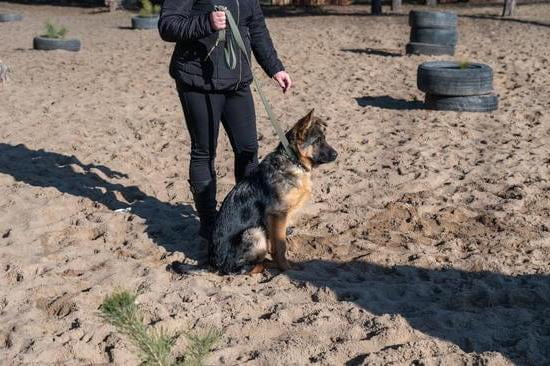Training your dog to stay within the confines of a fence is an essential aspect of responsible pet ownership. Not only does it ensure their safety, but it also offers you peace of mind knowing that your furry friend is secure and protected. In this article, we will explore why training your dog to stay in the fence is crucial and how you can achieve successful results.
Dogs are naturally curious beings with a strong sense of exploration. Without proper training, they may be prone to escaping from fences, putting themselves at risk of accidents, injuries, or becoming lost. Understanding the importance of a secure fence is vital in keeping your dog safe and preventing potential dangers.
When your dog roams beyond the fence boundaries, it exposes them to numerous risks. They could encounter traffic hazards, encounter other aggressive animals or injure themselves in unfamiliar environments. Additionally, when a dog escapes from its designated area, it could cause injury to others or damage property. The consequences extend beyond just the safety of your canine companion.
Choosing the right type of fence is the first step towards creating an effective barrier for your dog’s containment. Factors such as breed size, jumping ability, and digging tendencies should be considered when selecting a suitable option. Taking time to prepare your existing fence properly or installing a new one can ensure that it meets the specific needs and characteristics of your beloved pet.
By devoting time and effort into training your dog to recognize and respect their boundaries within the fenced area, you can establish a safe zone where they feel protected and content. Positive reinforcement techniques play a significant role in building their association with the fenced space as rewarding and comfortable – one that they naturally gravitate towards rather than away from.
In this comprehensive guide, we will provide you with effective strategies, tips, and tricks for training your furry companion to stay within the confines of their designated area securely. We will also address common challenges in fence training and offer troubleshooting solutions to help overcome resistance. By maintaining consistency and reinforcement, you can sustain the success of your dog’s fence training in the long run and further enhance the safety and harmony of your home.
Next, we will explore the importance of a secure fence in more detail, discussing the risks and consequences of your dog escaping.
Understanding the Importance of a Secure Fence
Having a secure fence is crucial when it comes to ensuring the safety of your dog and maintaining your peace of mind. Dogs have an innate curiosity and can easily be tempted to wander off if they see something interesting outside the boundaries. This can result in various risks and consequences that can be extremely detrimental to your pet’s well-being.
One of the biggest risks associated with dogs escaping from their fences is the danger of traffic accidents. When dogs roam freely outside, they are at risk of being hit by passing vehicles, which can lead to serious injuries or even fatalities. Additionally, there is always the possibility that your dog may wander into unfamiliar territories where they may encounter aggressive animals or other sources of harm.
Another consequence of a dog escaping from its fence is the potential for legal trouble. If your dog happens to enter someone else’s property without permission, it could result in complaints or even legal actions against you as the owner. It is important to remember that you are responsible for your dog’s actions and behaviors, even when it comes to their interactions outside of your own property.
| Statistics | Data |
|---|---|
| Percentage of missing dogs found more than 2 miles away from home | 20% |
| Number of traffic-related deaths for roaming dogs per year | Over 1 million |
| Average cost per dog reclaiming fee at shelters | $75-$200 |
These statistics highlight the potential dangers and costs associated with dogs escaping from their fences. By understanding these risks, you can better appreciate the importance of training your dog to stay within the boundaries of a secure fence. In the following sections, we will explore different methods and strategies to ensure your fence is escape-proof and teach your dog to recognize it as a safe zone.
Choosing the Right Type of Fence
When it comes to training your dog to stay in the fence, selecting the right type of fence is crucial for providing them with a secure boundary. Not all fences are created equal, and it’s important to consider various factors such as your dog’s size, temperament, and behavior patterns when making this decision.
In this section, we will explore the essential considerations and options that will help you choose a fence that effectively keeps your furry friend safe and protected.
Consider Your Dog’s Size and Agility
One of the first factors to consider is the size and agility of your dog. For larger breeds or dogs with high jumping abilities, a taller fence may be necessary to prevent them from easily scaling or jumping over it.
On the other hand, smaller dogs may require a fence with smaller gaps between each panel to ensure they cannot squeeze through or slip under it. Understanding your individual dog’s capabilities will guide you in determining the appropriate height and spacing of the fence.
Evaluate Your Dog’s Behavior and Triggers
Another important consideration is evaluating your dog’s behavior patterns and any specific triggers that may tempt them to escape. Some dogs have a high prey drive and may be inclined to chase after animals on the other side of the fence.
In this case, choosing a solid panel fence or one with obscured vision can help minimize distractions and reduce their desire to escape. Additionally, if your dog tends to dig holes or attempt to dig under fences, considering a fencing option that extends below ground level or adding wire mesh at the base can deter them from digging their way out.
Familiarize Yourself with Fencing Options
There are several fencing options available in today’s market, each with its own advantages and disadvantages. Some popular choices include chain-link fences which offer durability but may not provide the desired privacy, wooden fences which can be aesthetically pleasing but may require regular maintenance, and vinyl fences which are low-maintenance but may not be as sturdy.
It’s important to research each type of fence, assess its suitability for your dog’s needs, and weigh factors such as cost, visibility, and maintenance requirements before making a decision.
By carefully considering your dog’s size, behavior, and the various fencing options available, you can choose a secure barrier that effectively keeps your furry friend within the designated boundaries. Remember to prioritize their safety and well-being when making this decision and consult with professionals if needed. With the appropriate fence in place, you will have peace of mind knowing that your dog is safe and protected within their designated area.
Preparing the Fence
Before you begin training your dog to stay in the fence, it is crucial to make sure that your fence is dog-friendly and escape-proof. Taking the time to prepare your fence properly will help set you and your furry friend up for success in the training process. Here is a step-by-step guide to ensure that your fence is safe and secure:
- Inspect the existing fence: Start by thoroughly inspecting your current fence for any potential weak spots or areas where your dog may be able to escape. Look out for gaps, loose boards, holes, or any other damage that could compromise the integrity of the fence.
- Repair any damages: If you find any issues during the inspection, it’s essential to address them promptly. Replace any broken boards, fix loose hinges or latches, and fill in any gaps or holes with additional fencing material or mesh wire.
- Secure the bottom of the fence: Dogs are notorious diggers, so ensuring that there are no openings at the bottom of your fence is crucial. Bury wire mesh along the perimeter of the fence line or consider installing a concrete footer beneath it to prevent any digging attempts.
- Reinforce weak areas: Pay extra attention to corners and gates as these are common areas where dogs may try to escape. Reinforce these weak points by adding additional support such as corner braces or anti-digging barriers around gates.
- Consider adding visual barriers: Some dogs may be prone to escaping if they can see enticing stimuli on the other side of the fence, such as squirrels or other animals passing by. Consider adding visual barriers like privacy slats or screening material to deter their curiosity and prevent them from attempting to escape.
- Remove potential hazards near the fence: Take a look at what’s around your fence on both sides-remove any objects or plants that your dog could use as a stepping stone to jump over the fence. Keeping the area clear will minimize the risk of escape and also prevent any injuries.
By following these steps, you can ensure that your fence is dog-friendly and escape-proof, providing you with peace of mind knowing that your beloved pet will be safe within its boundaries. With a well-prepared fence, you’ll be ready to move on to the next step in training your dog to stay in the yard.
Establishing Boundaries
When training a dog to stay in the fence, it is crucial to establish clear boundaries and help them understand that the fence is their safe zone. By teaching your dog to recognize and respect the fence, you can ensure their safety and provide them with a sense of security. Here are some tips and techniques to help you establish boundaries effectively.
Consistency and Repetition
Consistency is key when teaching your dog to recognize the fence as their safe zone. Start by consistently using a specific verbal command, such as “boundary” or “stay close,” whenever you approach the fence during walks or playtime in the yard. Reinforce this command with hand signals or other visual cues to create associations in your dog’s mind.
It’s important to repeat this process consistently over time so that your dog understands what is expected of them. Regularly reinforce the boundary concept by redirecting your dog back into the fenced area if they attempt to cross it. Use positive reinforcement techniques, such as treats or praise, whenever your dog successfully stays within the boundaries.
Leash Training Near/In The Fence
Another effective method for establishing boundaries is leash training near or in the fence area. Attach a leash to your dog’s collar and keep them on a short leash while allowing them to explore close to the fence line. This allows you to control their movements and prevent any attempts to escape.
Whenever your dog tries to go beyond the designated area, gently pull them back towards the safe zone while using the verbal command you have established. Reward their compliance with treats and praise. Over time, your dog will associate being close to the fence with positive experiences and will learn not to venture beyond it.
Socialization with Other Dogs or Humans at The Fence
Socializing your dog with other dogs or humans near the fence can also help establish boundaries and reinforce the idea of the fence as their safe zone. Set up controlled interactions with friends, family members, or other dogs outside the fence while ensuring your dog remains on a leash.
Encourage positive associations by rewarding your dog for staying within their safe zone during these interactions. This will teach them that staying within the fenced area is not only safe but also provides opportunities for socialization and stimulation.
By consistently reinforcing boundaries, incorporating leash training, and socializing your dog near the fence, you can effectively teach them to recognize and respect their safe zone. Remember to remain patient and consistent in your training efforts, as every dog learns at their own pace.
Introducing Positive Reinforcement Techniques
Positive reinforcement is a highly effective training technique that can be used to build your dog’s association with the fence as a rewarding space. By using positive reinforcement, you will encourage your dog to view the fenced area as a safe and enjoyable place to be, reducing the likelihood of them wanting to escape.
One of the most important aspects of positive reinforcement is timing. It is crucial to reward your dog immediately after they exhibit the desired behavior. This helps them make a clear connection between their actions and the positive outcome. For example, when your dog stays within the boundaries of the fence, promptly praise them and offer a treat or a favorite toy as a reward.
Consistency is key when using positive reinforcement techniques. Make sure to consistently reward your dog each time they stay within the fence. Gradually decrease the frequency of rewards as your dog becomes more accustomed to staying inside the boundaries, but always continue to offer occasional rewards so that they maintain their positive association with the fenced area.
In addition to treats and toys, other forms of positive reinforcement can be utilized. Verbal praise, petting, and gentle play can also serve as rewards. Experiment with different types of rewards to see what motivates your dog the most. Every dog is unique, so it may take some trial and error before finding what works best for them.
To track the progress and effectiveness of positive reinforcement in building your dog’s association with the fence, keeping a record can be helpful. Note down any instances where your dog successfully stays within the boundaries without any prompting or hesitation. This will not only help you monitor their progress but also provide you with a sense of accomplishment in seeing how far they have come.
Using positive reinforcement techniques can greatly enhance your dog’s training experience and strengthen their bond with you as their owner. By creating an association between staying within the fence and receiving rewards and praise, you will help establish a strong connection in their mind that motivates them to respect the boundaries consistently.
| Positive Reinforcement Techniques for Fence Training | |
|---|---|
| Timing | Reward your dog immediately after exhibiting the desired behavior. |
| Consistency | Reward your dog each time they stay within the fence, gradually decreasing the frequency of rewards over time. |
| Variety | Experiment with different types of rewards to find what motivates your dog the most. |
| Record Keeping | Maintain a record to track your dog’s progress and celebrate their success in staying within the fence. |
Training your Dog to Stay within Boundaries
Training your dog to stay within boundaries is a crucial step in ensuring their safety and your peace of mind. It helps prevent them from escaping and facing various risks and consequences. Here are some effective strategies, tips, and tricks to encourage fence compliance for your furry friend:
- Gradual introduction: Introduce your dog to the fenced area gradually, rather than expecting them to understand and comply immediately. Start by keeping them on a leash and allowing them to explore the space while monitoring their behavior. This will help them become familiar with the boundaries.
- Positive reinforcement: Use positive reinforcement techniques such as treats, praise, and playtime to reward your dog when they stay within the fence boundaries. Whenever they exhibit desired behaviors, immediately reward them, reinforcing their association of staying within the fence as a positive experience.
- Clear communication: Teach your dog verbal commands like “stay” or “fence” coupled with hand signals that indicate where they should remain. Consistently use these cues whenever you want them to stay within the fence boundaries. Through repetition and consistency, they will begin to understand what is expected of them.
- Avoid punishment: Punishing or scolding your dog for attempting to escape can lead to fear or anxiety, making it less likely for them to comply with the fence boundaries in the future. Instead, focus on redirecting their attention back towards the safe zone and rewarding good behavior.
- Supervision and monitoring: Initially, spend time with your dog inside the fenced area to ensure they are staying within the boundaries. Regularly check for any weak points or potential escape routes that need addressing. Monitoring their behavior will allow you to promptly correct any missteps in training.
- Distractions and mental stimulation: Dogs may be tempted to escape if they feel bored or restless inside the fenced area. Provide plenty of mental stimulation through interactive toys, games, and regular exercise sessions outside the fence boundary. This will help keep them engaged and less likely to seek adventure beyond the fence.
Remember, patience and consistency are key when training your dog to stay within boundaries. Celebrate their successes along the way and always reinforce positive behavior. By following these strategies, tips, and tricks, you can ensure that your dog understands and complies with the fence boundaries, creating a safer environment for them to enjoy.
Troubleshooting Common Challenges
Training a dog to stay within the confines of a fence can sometimes present challenges and obstacles along the way. It is important to be prepared for these potential setbacks and have strategies in place to overcome them. In this section, we will explore some common challenges that may arise during fence training and provide tips on how to address them effectively.
One common challenge in fence training is when a dog attempts to dig under or jump over the fence. This behavior can be frustrating and potentially dangerous if the dog succeeds in escaping. To prevent digging, it is essential to reinforce the base of the fence by burying chicken wire or placing concrete blocks along the perimeter. Additionally, regular exercise and mental stimulation can help reduce a dog’s desire to escape through jumping or digging.
Another challenge that dog owners may encounter is resistance towards staying within the fenced area. Some dogs may show anxiety or fear when confined, leading them to try and escape. To overcome this resistance, it is crucial to create a positive association with the fenced area by rewarding the dog for staying inside. Gradually increase their time spent within the boundary while providing praise, treats, or playtime as reinforcement.
Furthermore, distractions can pose a significant challenge during fence training. Dogs are naturally curious creatures and easily enticed by sights, sounds, and smells beyond their designated area. In these situations, it might be helpful to use visual barriers such as privacy screens or planting tall shrubs along the perimeter of the fence. This helps minimize external stimuli and keeps your dog focused on their safe zone.
Addressing these common challenges requires patience, consistency, and adapting techniques based on your individual dog’s needs. By implementing these troubleshooting strategies, you can navigate potential setbacks in fence training successfully and ensure your dog remains safely within their designated boundaries.
| Common Challenge | Solution |
|---|---|
| Digging or jumping under/over the fence | – Reinforce the base of the fence by burying chicken wire or placing concrete blocks along the perimeter.
|
| Resistance towards staying within fenced area | – Create a positive association with the fenced area by rewarding the dog for staying inside.
|
| Distractions from external stimuli | – Use visual barriers such as privacy screens or tall shrubs to minimize sights, sounds, and smells beyond the designated area. |
Maintaining Consistency and Reinforcement
Once your dog has been successfully trained to stay within the boundaries of your fence, it is important to maintain consistency and reinforcement to ensure their continued success in the long run. In this section, we will discuss some key strategies and tips for sustaining your dog’s fence training.
Regular Reinforcement
Consistency is key when it comes to maintaining your dog’s fence training. Make sure to continue reinforcing the boundaries regularly, even after your dog has become accustomed to staying within them. This can be done through verbal praise, treats, or other rewards that your dog finds motivating. By consistently providing positive reinforcement, you will remind your dog of the importance of staying within the fence and strengthen their association between good behavior and rewards.
Supervision
While regular reinforcement is crucial, it is equally important to provide supervision during the initial stages of fence training and even afterwards. Supervising your dog while they are outside ensures that they are following the rules and not attempting to test or breach the boundaries. This also allows you to intervene immediately if there are any signs of potential escape or boundary challenges.
Maintain a Secure Fence
Regularly inspecting and maintaining your fence is essential for ensuring its effectiveness in keeping your dog safely contained. Check for any loose boards, gaps, or damaged areas that could be an entry point for escape. Additionally, consider installing deterrents such as coyote rollers or dig barriers if needed.
Mental Stimulation and Exercise
To prevent boredom or frustration that may lead to a desire to escape, it’s important to provide ample mental stimulation and physical exercise for your dog. Engage in daily activities such as walks, play sessions, and puzzle toys that keep them mentally and physically engaged. A tired and fulfilled dog is less likely to seek out opportunities to escape or wander beyond the fence.
By following these strategies, you can effectively maintain your dog’s fence training success in the long run. Consistency, reinforcement, supervision, and providing mental and physical stimulation will help keep your furry friend safe and happy within the boundaries of your home. Remember that each dog is unique, so continue to assess their needs and adjust your training approach accordingly.
Beyond the Fence
One of the key factors in training your dog to stay within the fence is ensuring that they are mentally stimulated and getting enough exercise. Dogs that become bored or restless are more likely to attempt escaping, as they seek out new adventures and stimulation. By providing ample mental stimulation and exercise, you can keep your dog content and reduce the likelihood of them trying to escape.
To prevent boredom, consider incorporating interactive toys into your dog’s routine. Toys that dispense treats or require problem-solving can keep their minds engaged and occupied. Puzzle toys, for example, can challenge your dog’s problem-solving skills while rewarding them with treats when they successfully solve the puzzle. These toys not only provide mental stimulation but also satisfy your dog’s natural instincts to explore, sniff, and work for rewards.
Alongside mental stimulation, regular exercise is crucial in keeping your dog both physically fit and mentally satisfied. Providing daily walks or play sessions in a secure area can help release any pent-up energy that may contribute to escape attempts. Engaging in regular activities such as fetch or agility training can tire out your dog both mentally and physically.
In addition to physical exercise, mental exercises such as obedience training can also stimulate your dog’s mind and teach them valuable skills. Training sessions not only provide mental stimulation but also strengthen the bond between you and your furry friend. Incorporate basic commands like sit, stay, or paw into their training routine.
By ensuring that your dog receives adequate mental stimulation and exercise, you can prevent boredom-induced escaping behaviors. This will complement the efforts put into training them to stay within the fence, ultimately creating a safe environment for both you and your beloved pet.
Conclusion
In conclusion, training your dog to stay within the fence is not only crucial for their safety but also for your own peace of mind. By understanding the risks and consequences of your dog escaping, you can take the necessary steps to ensure that your fence is secure and escape-proof. Choosing the right type of fence and preparing it properly are essential considerations in creating an effective barrier.
Establishing boundaries and teaching your dog to recognize and respect the fence as their safe zone is a fundamental part of their training. Through positive reinforcement techniques, you can build a strong association between the fence and rewarding experiences for your dog. Consistency and reinforcement are key in maintaining their success in staying within the boundaries of the fence.
While training your dog to stay within the fence is important, it’s also essential to provide them with mental stimulation and exercise to prevent boredom and curiosity that may lead to escaping. Keeping them engaged and stimulated will further enhance their well-being while ensuring they remain content within the confines of their home.
Ultimately, by successfully training your dog to stay within the fence, you are celebrating their success while creating a safer environment for them to thrive in. A well-trained fence not only enhances the safety of your home but also promotes harmony within your household by providing both you and your furry friend with peace of mind.
Frequently Asked Questions
How do I train my dog not to get out of the fence?
Training a dog not to get out of the fence begins with properly securing the fence itself. Ensure that there are no loose or damaged sections, as dogs can easily find and exploit these weak areas. Next, work on obedience training with your dog so they understand basic commands such as “stay” and “come.”
Introduce them to the concept of boundaries by using positive reinforcement techniques when they stay within the designated area and redirecting them back if they try to cross it. Consistency is key in this training process – reinforce the boundaries every time and be patient as it may take some time for your dog to fully grasp the concept.
Can you train a dog to stay in an unfenced yard?
Yes, it is possible to train a dog to stay in an unfenced yard, although it may require more effort and vigilance from the owner. Begin by establishing clear boundaries for your dog using physical markers or invisible fences if necessary. Teach your dog basic obedience commands such as “stay” and practice them regularly within these boundaries, gradually increasing distractions as their training progresses.
Utilize positive reinforcement techniques such as treats, praise, and rewards when they successfully remain within the established borders. Supervision is crucial during this training process, especially in the initial stages, until you are confident that your dog will consistently stay within the unfenced yard.
How do you train a dog to stay within boundaries?
Training a dog to stay within boundaries largely depends on consistent reinforcement, clear communication, and positive experiences within those limits. Start by defining specific boundaries either through physical barriers or visual markers like flags or signs. Use positive reinforcement techniques such as treats or praise whenever your dog respects these boundaries appropriately or returns when called back.
Provide regular exercise, mental stimulation, and enrichment activities within these bounds to keep your dog engaged and content while discouraging wandering tendencies. Consistency is crucial throughout this process; reinforce the boundaries consistently until staying within them becomes second nature for your furry friend. Patience and understanding are important as dogs may occasionally test limits or engage in exploratory behavior, so ongoing training and reinforcement will be necessary to maintain their understanding of the boundaries.

Welcome to the blog! I am a professional dog trainer and have been working with dogs for many years. In this blog, I will be discussing various topics related to dog training, including tips, tricks, and advice. I hope you find this information helpful and informative. Thanks for reading!





